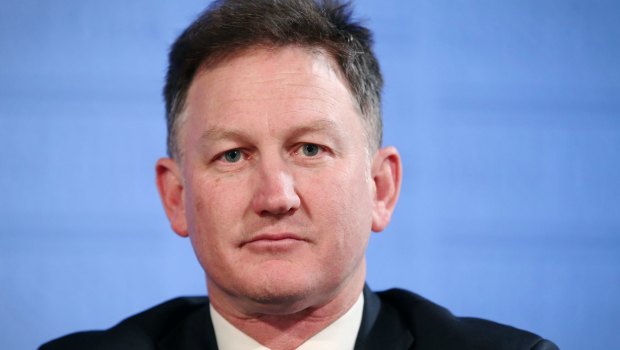- Exclusive
- Politics
- Federal
- Health insurance
This was published 7 years ago
Doctors name and shame health insurers as profits and complaints soar
By Adam Gartrell
Doctors have exposed the best and worst private health insurers in a new report card that shows the major funds are continuing to grow their profits even as policy exclusions spread and customer complaints soar.
The Australian Medical Association is also sounding the alarm over changes being pursued by some of the biggest funds - most notably Bupa - which it says will curb patient choice and further undermine public trust in the industry.
In its latest annual look at the private health insurance industry, the AMA ranks eight of Australia's top funds on the basis of the benefits they pay for 21 of the most common hospital-based procedures - including colonoscopies, hip and knee replacements, breast biopsies and heart bypass surgery.

Doctors say private health insurance funds are drifting towards US-style managed care.
As consumers brace for another $200-a-year average premium price rise next week, the AMA report shows a large variation in payments - suggesting some policy holders are more likely to face out-of-pocket fees than others.
Giants Medibank and NIB and regional fund Mildura all fare particularly poorly in the rankings.
Mildura ranks last on 10 of the 21 procedures and NIB ranks last on a further eight. Medibank ranks sixth or seventh on all but one of the procedures.
HCF is by far the best performing fund on the league table, paying the highest benefit in 12 of the 21 categories.
The second best insurer was AHSA (the Australian Health Service Alliance), which is made up of 30 smaller industry players. It paid the top benefit in six of the categories and came second in a further four.
The rankings show benefits paid can vary wildly.
For example, HCF pays out $2058 for an uncomplicated baby delivery but Mildura pays out just $1353. For a coronary artery bypass, AHSA will pay out $3820, while Mildura will pay $800 less, at just over $3000.
The report also shows the discrepancies in what a single fund will pay out in different states.
For example, Bupa will pay $842 for an overnight sleep apnoea investigation in Victoria but just $635 for the same procedure in Tasmania.
“Our report card shows that the profits of the insurers continue to rise, the growth of policies
with exclusions continues to grow and policy holder complaints continue to rise," said AMA President Michael Gannon.

AMA President Michael Gannon has sounded the alarm on the latest trends in private health insurance.Credit: Alex Ellinghausen
Customers made nearly 6000 complaints to the Private Health Insurance Ombudsman in 2016-17 - a 30 per cent increase on the previous year and the highest number of complaints in a decade.
The report card comes just weeks after Bupa caused controversy by announcing a decision to overhaul its medical gap scheme. Insured patients will only be eligible for gap cover if they are treated at a Bupa-contracted hospital.
Dr Gannon says the new arrangements undermine the role of the doctor in providing and advising the most appropriate care and could ultimately drive up out-of-pocket costs for patients.
“Public confidence in private health insurance is already at an all-time low," Dr Gannon said.
"These changes will further devalue policies, which are a major financial burden for Australian families and will place dangerous pressure on the already stressed public hospital system.”
Dr Gannon says the Turnbull government has undertaken some important reforms to private health insurance, including drawing up plans to simplify the policy system with a four-tier "gold, silver, bronze and basic" system.
“The funds must not be allowed to sabotage these reforms," Dr Gannon said.
The AMA has renewed its call for an end to "junk policies" - those designed to avoid the Medicare surcharge but which do not clearly explain that they are limited to low levels of coverage.
The report card was assembled using data from the Australian Prudential Regulation Authority (APRA), the Private Health Insurance Ombudsman and the insurers’ own websites.